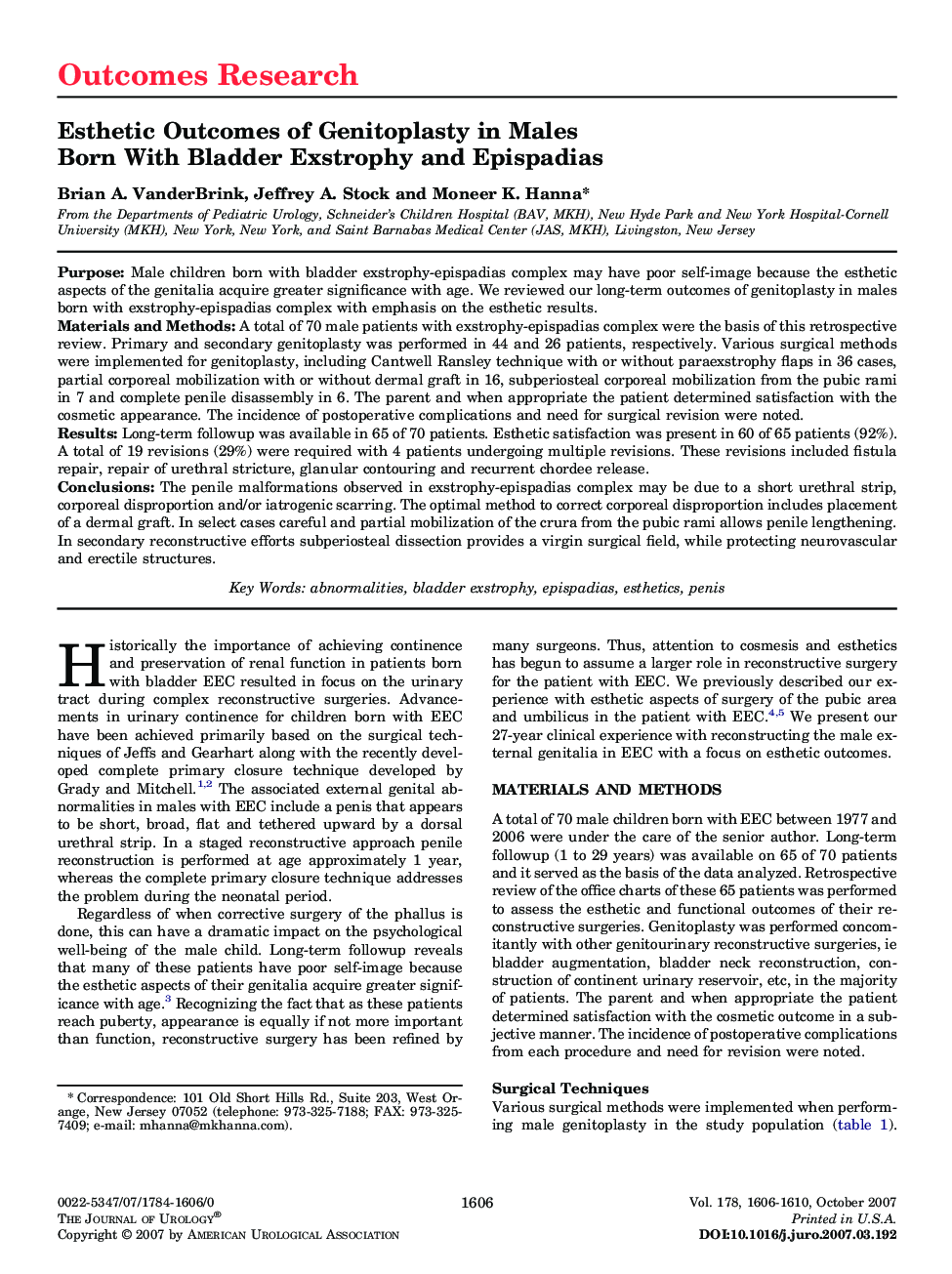| Article ID | Journal | Published Year | Pages | File Type |
|---|---|---|---|---|
| 3876987 | The Journal of Urology | 2007 | 5 Pages |
PurposeMale children born with bladder exstrophy-epispadias complex may have poor self-image because the esthetic aspects of the genitalia acquire greater significance with age. We reviewed our long-term outcomes of genitoplasty in males born with exstrophy-epispadias complex with emphasis on the esthetic results.Materials and MethodsA total of 70 male patients with exstrophy-epispadias complex were the basis of this retrospective review. Primary and secondary genitoplasty was performed in 44 and 26 patients, respectively. Various surgical methods were implemented for genitoplasty, including Cantwell Ransley technique with or without paraexstrophy flaps in 36 cases, partial corporeal mobilization with or without dermal graft in 16, subperiosteal corporeal mobilization from the pubic rami in 7 and complete penile disassembly in 6. The parent and when appropriate the patient determined satisfaction with the cosmetic appearance. The incidence of postoperative complications and need for surgical revision were noted.ResultsLong-term followup was available in 65 of 70 patients. Esthetic satisfaction was present in 60 of 65 patients (92%). A total of 19 revisions (29%) were required with 4 patients undergoing multiple revisions. These revisions included fistula repair, repair of urethral stricture, glanular contouring and recurrent chordee release.ConclusionsThe penile malformations observed in exstrophy-epispadias complex may be due to a short urethral strip, corporeal disproportion and/or iatrogenic scarring. The optimal method to correct corporeal disproportion includes placement of a dermal graft. In select cases careful and partial mobilization of the crura from the pubic rami allows penile lengthening. In secondary reconstructive efforts subperiosteal dissection provides a virgin surgical field, while protecting neurovascular and erectile structures.
